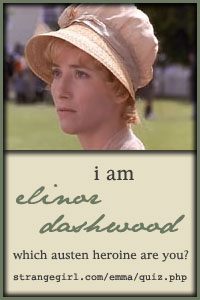Pinwheel Beret Pattern
As promised, here is the beret pattern that I
 developed from the Pinwheel sweater designed by Shelly Mackie for elann.com. I seem to be on a spiral kick recently. I just finished these easy spiral socks (a free pattern designed by Sandi Rosner) as well as the beret and the pinwheel sweater. I wear this beret almost every day. It looks great on my head, with just enough slouch. This hat is designed to fit an average adult female's head, 20-21" around. A great resource for making a similar hat using any weight yarn and gauge is on Kirsten Kapur's blog, which I just discovered tonight through Ravelry. Some other great hat patterns are on her blog as well as gloves, scarves, etc. I also found a very similar pattern this morning on Amy (Java Twist's) blog. Great minds think alike.
developed from the Pinwheel sweater designed by Shelly Mackie for elann.com. I seem to be on a spiral kick recently. I just finished these easy spiral socks (a free pattern designed by Sandi Rosner) as well as the beret and the pinwheel sweater. I wear this beret almost every day. It looks great on my head, with just enough slouch. This hat is designed to fit an average adult female's head, 20-21" around. A great resource for making a similar hat using any weight yarn and gauge is on Kirsten Kapur's blog, which I just discovered tonight through Ravelry. Some other great hat patterns are on her blog as well as gloves, scarves, etc. I also found a very similar pattern this morning on Amy (Java Twist's) blog. Great minds think alike.
I'm making one using rose pink Malabrigo worsted (aran weight) on size 8 needles right now, at a larger gauge, so I'll knit fewer increase rounds before decreasing for the bottom of the beret. It looks like it will need 20 stitches in each section, 160 total, to make a 12" diameter circle before decreasing. I think I'll call this one the Raspberry Beret, or maybe the Red Beret? I stayed up way too late last knit knitting this one. Hopefully my DD won't steal it out of hands as soon as it's finished.
Gauge for the heavier weight yarn : 18 st/24 rounds over 4 inches
Direct PDF link for the Raspberry Beret pattern
There was a wonderful documentary about Pete Seeger on PBS that I had to finish watching. I had tears in my eyes when he sang Guantanamera with Arlo Guthrie and his own grandson, Tao Rodríguez- Seeger. Pete and I share a birthday. I think I'll have to design a pattern to honor him that day. He'll be 89 and I'll be ... ahem, not that old.
4.5 mm (US 7) set of five double pointed needles (DPN's)
You will also need a set of smaller (4 mm, US 6) DPN's or 16" circular to knit the ribbing (optional).
If you prefer, use the two circular or magic loop methods to knit this hat. The first few rounds are tricky, so I like to use wooden double points that the yarn will stick to.
Gauge: 22 stitches and 28 rounds over 4 inches/10 cm on size 7 US (4.5mm) needles
Using the 4.5mm double-pointed needles, cast on 4 stitches. Place 1 stitch on each needle.
Round 1: Join into a round, being careful not to twist the stitches. Knit into the front and the back of each stitch - 8 stitches in this round.
Mark the beginning of the round with a stitch marker and move this marker up every round.
Round 2 and all even numbered rounds: Knit.
Round 3: *K1 , YO*, repeat between *'s to end of round, making sure you make your last yo on each needle or beginning of the new needle. 4 sts on each needle, 16 total stitches
Round 5: *K2, YO*, repeat between *'s to end of round. (6 sts on each needle)
Round 7: *K3, YO*, repeat between *'s to end of round. (8 sts on each needle)
Round 9: *K4, YO*, repeat between *'s to end of round. (10 sts on each needle)
Round 11: *K5, YO*, repeat between *'s to end of round. (12 sts on each needle)
Round 13: *K6, YO*, repeat between *'s to end of round. (14 sts on each needle, 56 total stitches)
Switch to knitting on the 16" circular needle whenever you have enough stitches to knit comfortably, or use two longer circulars or magic loop from the beginning.
Continue increasing in this manner, changing to the circular needle when possible, until you have 21 stitches between increases (176 stitches total). Beret should measure about 12" across at this point. I inserted an attempt at a pattern stitch, which will be the rolled edge of the beret and looks very pretty. Some easy one round stitch pattern suggestions:
Round 1: *YO, SL 1, K2 TOG, PSSO, YO, K2*, repeat between *'s to end of round.
Rounds 2 & 4: Knit around
Round 3: *K2, YO, SL 1, K2 TOG, PSSO, YO*, repeat between *'s to end of round.
OR: The 4 round lace/texture pattern of your choice. Maybe a bobble pattern? I'm going to try a stranded or slip stitch design using some leftover Malabrigo in a different color.
After four rounds of pattern stitch (or just 4 plain knitting rounds), begin decreasing for the brim of the hat.
1st decrease round: *Knit 6, K2 TOG*, repeat between *'s to end of round (154 stitches)
Rounds 2-3: Knit around
2nd decrease round: *Knit 5, K2 TOG*, repeat between *'s to end of round (132 stitches)
Rounds 5-6: Knit around
3rd decrease round: *Knit 4, K2 TOG*, repeat between *'s to end of round, (110 stitches)
Rounds 8-9: Knit around
4th decrease round: *Knit 3, K2 TOG*, repeat between *'s to end of round, (88 stitches)
Switch to the smaller needles at this point (or not) and begin ribbing pattern.
Ribbing Pattern: *K2, P2*, repeat between *'s to end of round
Repeat the last round of ribbing for 8-10 rounds. Bind off in pattern. Weave in ends, block using a large plate as a form. and wear with pride.





















 Knitters Without Borders Challenge
Knitters Without Borders Challenge


 Knit
Knit


























3 comments:
be nice if there was a print you could click. I tried to print the pinwheel beret pattern, received the picture and the next two pages were the side bar pictures, wasting my ink and paper and no pattern.
I will be adding a PDF link for this pattern in the next few days. In the meantime, you can do what I usually do and copy and paste the pattern text to a word document.
Thanks for your comments, Frances
Hi,
Thank you for the Beret pattern.
I started this morning.
http://www.ravelry.com/people/picarapirk
For the start I did this:
Crocheted 4 chains, joined to a ring. Crocheted 8 single crochet stitches into the ring. Picked the 8 stitches with 4 knitting needles, and proceeded with the pattern. No tricky situation there.
I have a picture in my ravelry projects, if you want to see.
Thanks again, I love this hat. Planning to make another one, later.
Post a Comment